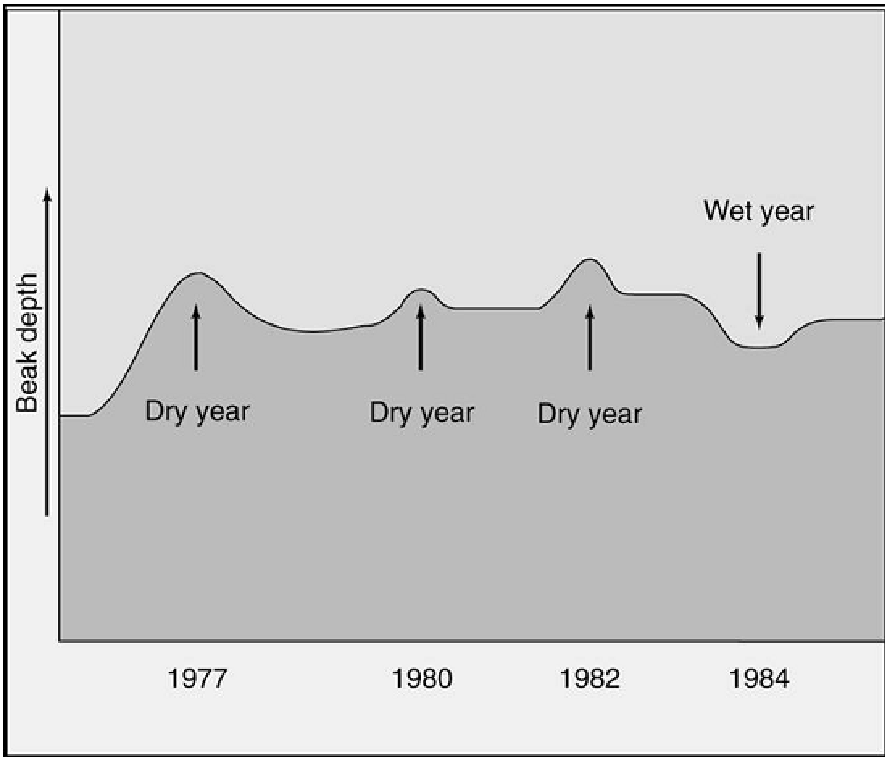The pattern of wet years and dry years shown will probably move the population toward

A. all having larger beaks.
B. all having smaller beaks.
C. having intermediate size beaks.
D. having two, distinct populations.
E. maintaining abundant variation in beak depth.
Clarify Question
What is the key concept addressed by the question?
What type of thinking is required?
Gather Content
What do you already know about natural selection? What other information is related to the question?
Choose Answer
Given what you now know, what information is most likely to produce the correct answer?
Reflect on Process
Did your problem-solving process lead you to the correct answer? If not, where did the process break down or lead you astray? How can you revise your approach to produce a more desirable result?
E. maintaining abundant variation in beak depth.
Clarify Question
What is the key concept addressed by the question?
· The question stem is asking you to assess how beak depth changes during the wet years and dry years.
What type of thinking is required?
· This is an analyze question because you have to break beak depth and changes in precipitation into their component pieces to understand how they function in relation to one another.
Gather Content
What do you already know about natural selection? What other information is related to the question?
· Changes in the amount of precipitation influence the food available for consumption by the birds. Beak depth limits the birds to only certain food types.
Choose Answer
Given what you now know, what information is most likely to produce the correct answer?
· Natural selection can only be applied to the variation found within the population. If the environment fluctuates between wet and dry years, then what kind of beak depth would be best adapted to the environment? It may seem like an intermediate beak size would also be favored in this example, however, the lack of food choices for that size of beak would be limited and therefore not favored.
Reflect on Process
Did your problem-solving process lead you to the correct answer? If not, where did the process break down or lead you astray? How can you revise your approach to produce a more desirable result?
· Answering this question correctly depended not only on distinguishing between precipitation and beak depth, but on your ability to break down, or analyze, how natural selection is influenced by the environment¼ If you got an incorrect answer, did you remember that components of natural selection include adaptations selected from the available variations within the population, or that environment would likely affect beak depth by changing which beak depth is best adapted to the changing environment? Did you have trouble breaking down how natural selection works to determine the correct answer?
You might also like to view...
Griffith found that a mouse injected with the green 'R' bacteria lived. When injected with the red 'S' bacteria died but if injected with dead 'S' bacteria, the mouse lived. In the image here, the mouse was injected with dead 'S' bacteria along with the live 'R' bacteria. The mouse then died.
Who followed up this experiment to determine what "transforming principle" caused the mice to die?
How did Briggs and King move the nuclei between cells?
A. with a glass pipet B. with a dissecting needle C. with a scalpel D. with forceps
Which animal would you predict would have the highest mass-specific metabolic rate?
A. a lizard B. a squid C. an elephant D. a goose E. a hummingbird
The most likely (and most accepted) explanation for the extinction of neandertals is:
A. Interbreeding with modern humans B. Open conflict with modern humans C. Inability to adapt to changing environment D. Inefficient tool culture E. Inefficient social system